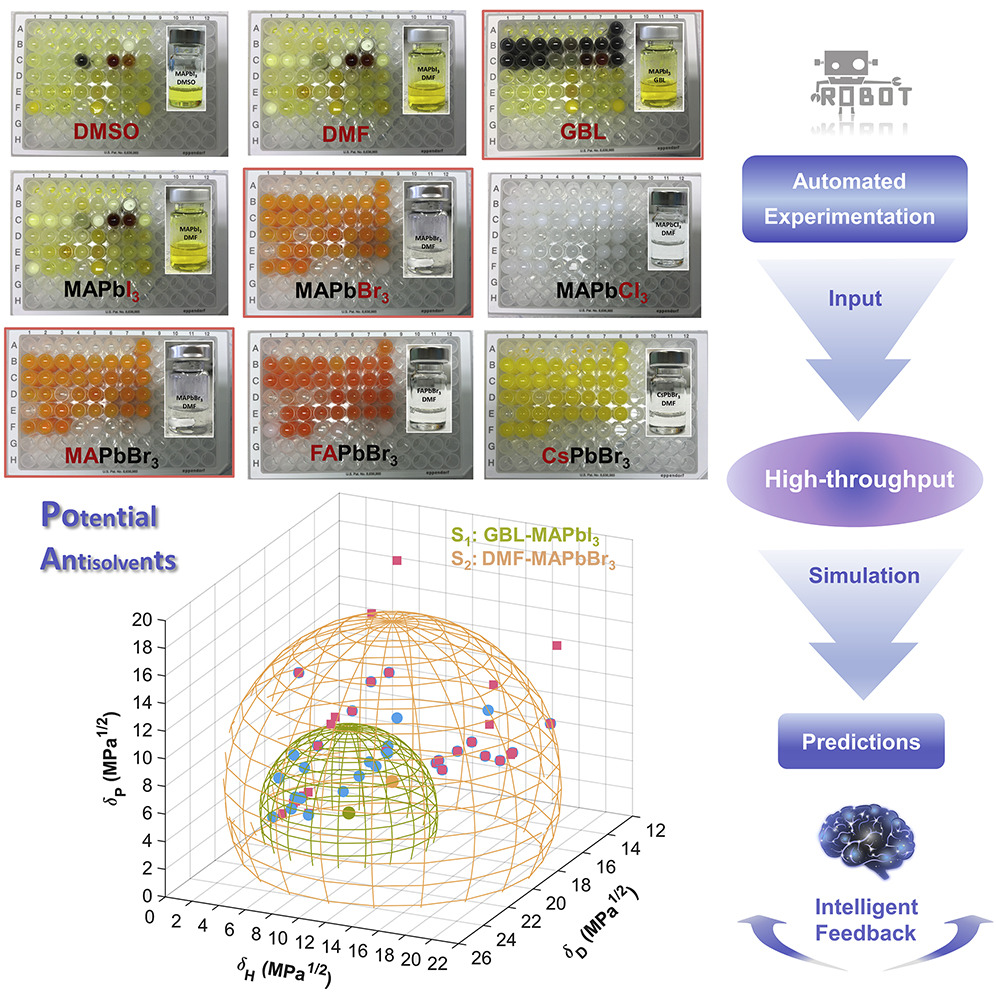Ening´s paper on deciphering the design rules for antisolvent perovskite engineering by robot based high-throughput screening goes online in Joule
Solution-based processing of photovoltaic materials has important advantages, including lower overall costs and easier upscaling of fabrication, where the solvents play an essential role. Antisolvent crystallization technique is often applied to achieve high-quality perovskite materials. However, the basic chemistry of the solvent-antisolvent crystallization is still not well understood. Besides, common antisolvents are toxic, and their number is limited. In this work, a novel robot-based method was used to screen and identify the most efficient antisolvents for different solvent-perovskite systems. 336 combinations of perovskite-solvent-antisolvent could be prepared and characterized by the integrated robotic platform within 2 days only. In addition, we provided a detailed working mechanism of the solvent-antisolvent crystallization approach. A detailed analysis allowed us to create a Hansen solubility sphere for the antisolvents. The quality and reliability of the plot was that high that one could immediately recognise that these anti-solvents must be solubilizing a perovskite precursor stage. With the help of molecular dynamics (MD) simulations we could identify the complexes which serve as as the crucial precursor for nucleation. Fast and complete quenching of these precursors by selective anti-solvents is the key strategy to foster large crystal growth with a low defect density.
Link to the paper
Robot-Based High-Throughput Screening of Antisolvents for Lead Halide Perovskites

